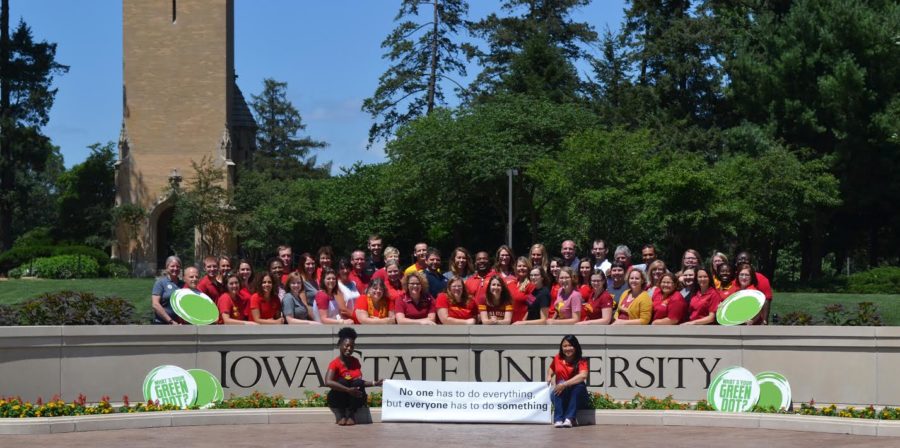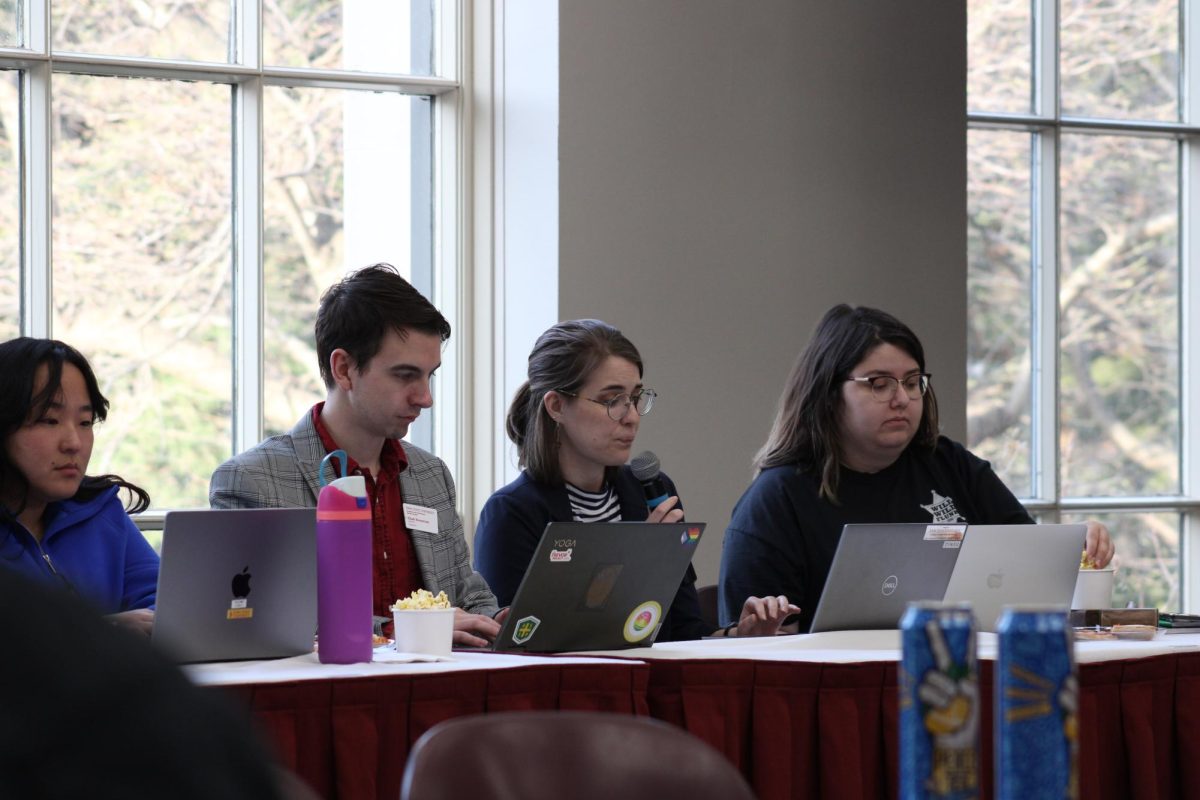Faculty, staff participate in Green Dot violence prevention training
Faculty and staff who participated in the first round of facilitator training of the Green Dot program pose by the Iowa State University sign.
July 17, 2017
Around 50 faculty and staff members of Iowa State University went through facilitator training, beginning July 10, to help implement a new violence prevention program on campus.
Jazzmine Brooks, Iowa State’s sexual misconduct prevention coordinator, said they spent the week thinking about inspiring and engaging the community and learning about the program so they could in turn teach the program.
Last spring Iowa State chose Green Dot, a nationally-recognized bystander intervention training program, as the program to reduce and prevent violence on campus. The program targets relationship violence, stalking and sexual violence, relating acts of violence or inaction to red dots and a green dot is any behavior, choice, word, or attitude that promotes safety for all our citizens and communicates utter intolerance for violence, according to livethegreendot.com.
Brooks likened Green Dot to the balloon inside paper-maché. Iowa State would form a structure around the program that can be used in violence prevention, even when the program goes away, to promote a culture of respect.
The first priority was to select the faculty and staff volunteers to serve as Green Dot facilitators. Brooks said there were participants from Thielen Health Center, the Academic Success Center, the Department of Residence and a mix from other departments and advisors, so they also looked at how to implement the program within their section.
“We call them proactive Green Dots,” Brooks said. “When we look at culture change, we want to do proactive things. How can we create an environment so that someone steps on this campus and knows that violence is not an option, and that people will intervene? What are we doing as a campus to create culture change?”
The facilitators who went through training with two professionals from the program can now teach “booster sessions” to students and other faculty. The program offers two levels for each group: a basic overview session, and a longer, more in depth look at intervention in all three kinds of violence.
“One is an overview, one is true bystander intervention,” Brooks said.
Green Dot focuses on three arts of bystander intervention: direct intervention, delegate and distract. Direct intervention has bystanders actively stop or prevent violence that happens in front of them. The program also teaches bystanders how to best delegate and communicate with others to end or prevent a dangerous situation, and how to de-escalate situations by distracting the aggressor.
The next group that will go through Green Dot training are called “early adopters,” highly-influential students on campus. Those students could be members of high-risk areas already in leadership positions or part of student organizations, but they don’t have to be. They’re upperclassmen with the ability to influence, Brooks said.
Those students, who will be sought out by facilitators, would go through the longer session on bystander intervention.
Keith Robinder, then-interim dean of students and chair of the ISU Sexual Misconduct Leadership Committee, said at the time of the selection that the program’s emphasis on student engagement and bystander intervention was a great fit for the culture of student involvement at Iowa State.
Through the Peer Wellness program, 10 students will focus on violence prevention. Their task will be to aid in implementing the program.
“They’ll help doing what we call ‘Be Well’ huts. Those will be throughout the week, different conversations and different topic areas of engagement around consent and around intervention and healthy relationships,” Brooks said.
Student organizations or departments can request to have a facilitator share either the shorter or longer session. In the first year, Brooks is prepared to do more shorter sessions.
During the fall students can watch for a launch of the Green Dot program. There will also be a Green Dot booth at Destination Iowa State for incoming students.
In the spring semester, Student Services is working with University Museums to have an exhibit that ties to the Green Dot program. Green Dot will have a full week of awareness in April.






